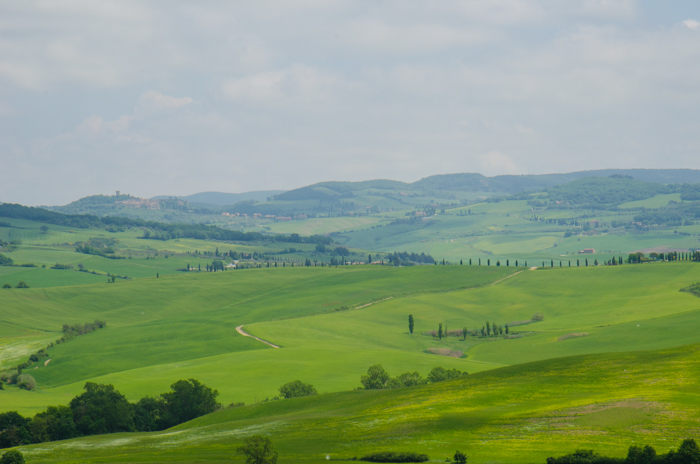 Our Walk and Wine tours in Italy take us to some of Italy’s loveliest landscapes – the Langhe hills of Piedmont, Val d’Orcia of Tuscany, and the Verona province of the Veneto – as we discover the home of Italy’s most prestigious wines. The Montalcino area in Tuscany is a prime example. While we enjoy our daily explorations in the picturesque Tuscan countryside, we develop a true appreciation for how this glorious land shaped the outstanding Brunello wines we sample along the way.
Our Walk and Wine tours in Italy take us to some of Italy’s loveliest landscapes – the Langhe hills of Piedmont, Val d’Orcia of Tuscany, and the Verona province of the Veneto – as we discover the home of Italy’s most prestigious wines. The Montalcino area in Tuscany is a prime example. While we enjoy our daily explorations in the picturesque Tuscan countryside, we develop a true appreciation for how this glorious land shaped the outstanding Brunello wines we sample along the way.
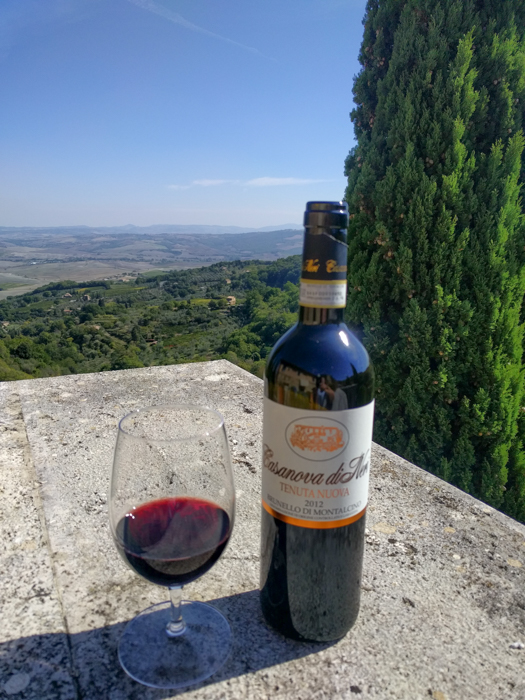
Brunello di Montalcino, and its younger sibling, Rosso di Montalcino, are both produced using exclusively Sangiovese grapes, Sangiovese in purezza as the locals say. They are, in fact, the only DOC wines in Italy that are required to be 100% Sangiovese. Wines from Chianti and the Vino Nobile from nearby Montepulciano CAN be 100% Sangiovese, but they don’t HAVE to be. Sangiovese is the most commonly planted grape in Italy, primarily grown in Tuscany and Emilia-Romagna, but found in other regions as well.
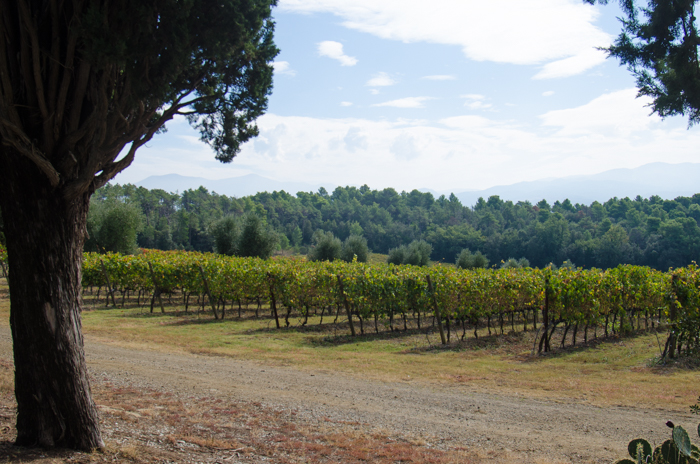
It is a very temperamental grape – late-ripening, difficult, unforgiving. It exhibits a huge variation between plants, even clones, depending upon the growing conditions. It is believed to have originated in Tuscany, but this is still up for debate. For hundreds of years farmers in Tuscany cultivated their local grapes, which had their own local names: Morellino di Scansano in the Maremma area of Tuscany, Sangioveto in Chianti, Prugnole Gentile in Montepulciano, Sangiovese Grosso or Brunello in Montalcino. These local grape vines were assumed to be different varieties; they had leaves of different shapes and sizes; some had larger grapes, others smaller; the bunches of grapes were more tightly packed on some than others.
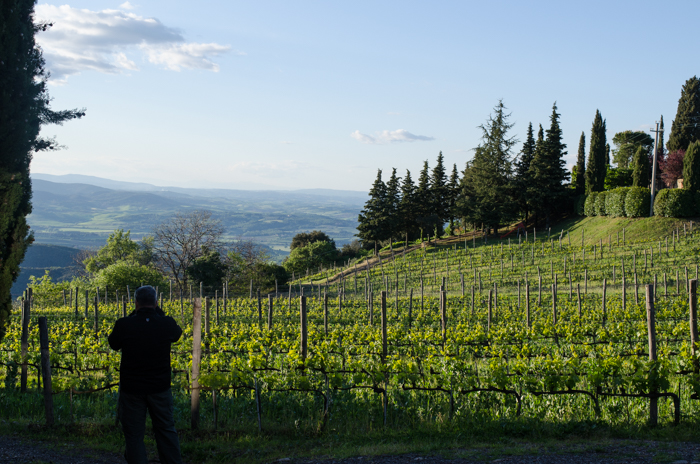
In 1876, a group commissioned to understand the local grape varietals undertook an experiment where they planted these 4 varieties: Morellino di Scansano, Sangioveto, Prugnole Gentile, and Sangiovese Grosso in the same single vineyard, and watched, recorded, and made wine. Lo and behold, as time passed, the 4 varieties changed – the stark differences in appearance began to fade, the wines produced by each developed a noticeable similarity, and they responded in like ways to different growing seasons. Today we know that these are all local expressions of the Sangiovese grape.
Cabernet is considered a resilient variety, You can grow it across a range of terroir – different elevations, various soil types, different microclimates – and you will get somewhat predictable results. Not so with Sangiovese, it strongly “expresses” its terroir, with wildly fluctuating results depending on its home, climate, soil type. It can be overly acidic, lighter in body, mediocre. But at the right altitude, in certain soil types, with the right amount of sunlight, Sangiovese wines develop unparalleled aromas, intense flavors, with a complexity and ability to age that escape all but a very few wines. Montalcino is this perfect growing environment for this mercurial grape.
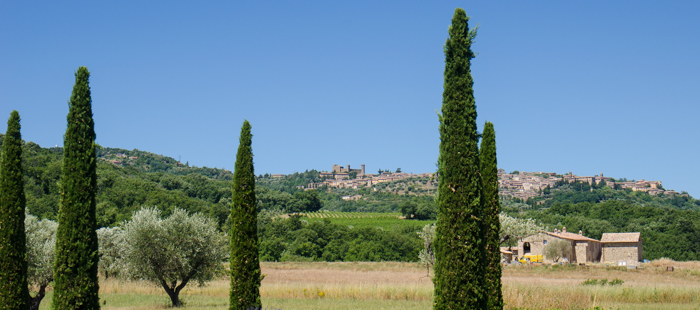
Montalcino is a hilltop town and surrounding comune in the province of Siena, Tuscany. Located just west of Pienza, we enjoy spectacular views of the picturesque Val d’Orcia during our visit. Nearby Monte Amiata dominates the south-east horizon, and on clear evenings I have sipped Brunello while gazing at the Islola di Giglio in the Tyrrhenian Sea just 40 miles away. Montalcino is closer to the coast than either Chianti or Montepulciano, and so benefits from a more Mediterranean climate – warmer, greater diurnal temperature variations, a longer growing season offering late-ripening Sangiovese a chance to fully evolve.
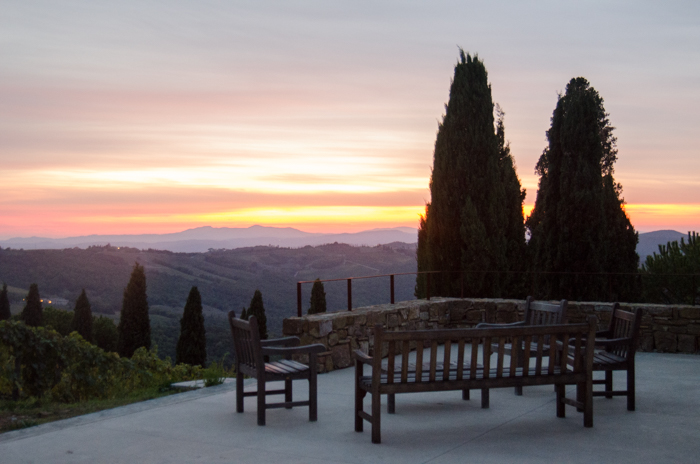
Within the zone itself we find a myriad of microclimates. The elevation of vineyards in this relatively small area range from almost sea level to 1640 meters (over 5000 feet). There are pronounced differences in rainfall and summer temperatures throughout.
But what perhaps is one of the most unique characteristics of the Montalcino terroir is the sheer number of different soil types found in this zone. The producer Banfi has identified 29 different types in its vineyards alone. Italy was formed when the African and European plates collided, and the soils from each plate intermingled. Millions of years ago, Italy was under a sea, and slowly emerged. We learn about this in other wine zones, like Barolo, where this ancient event plays a role in the intensity and longevity of the wines of today. Here in Montalcino, however, this emergence was not as “clean”, here the sea retreated and returned numerous times, unearthing and remixing the soil each time. The instability created by this fractured emergence caused massive erosions, sending millions of tons of earth crashing down from higher elevations, mixing different layers of soil, distributing marine fossils throughout, resulting in a highly complex array of soil types. Higher elevations experienced a bit less of this churn, lower a bit more.
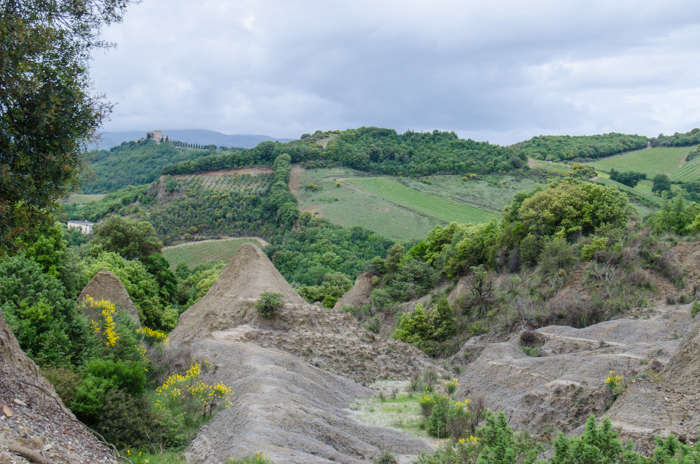
To give a few concrete examples we encounter on our travels, there are the distinctive “Le Ripi”, of Podere le Ripi, south of Montalcino near Sant’Antimo. “Le Ripi”, the cliffs, are tenacious clay based hills that remain after thousands of years of erosion washed away the surrounding more porous soils. Here is lots of clay, still quite salty. Limestone boulders remain, rounded down from centuries of the sea receding and returning. Many minerals are found in the soil here, just 7 miles from Monte Amiata, an ancient volcano. Today Podere grows both Sangiovese as well as Syrah and Merlot. This clay soil presents itself in powerful, intense wines, salty, with good acidity. Also worth seeing here is the most densely planted vineyard in the world, as well as their unique nautilus shaped cellar.
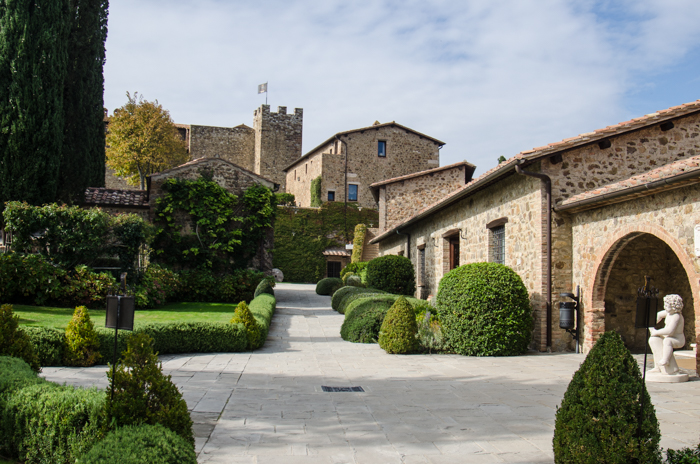
The largest producer in the Montalcino area is Castello Banfi estate. Owned by the Mariani family of Long Island, NY, they established Castello Banfi in the southern part of the zone in 1978, and today they are leaders in research into the grapes and terroirs of Montalcino. Over 10 years ago, while digging in a vineyard, workers uncovered the massive skeleton of a prehistoric whale. Nicknamed “Brunella”, this creature, believed to be about 4 million years old, is being carefully cleaned, reassembled and studied by a team of paleontologists, financed by Banfi. Visitors to the Castello can stop by and watch the scientists at work. A friendly professor gave me a quick tour, pointing out the small shark teeth and teeth marks on the skeleton itself, indications that “Brunella” may have met and untimely end. It is fascinating to see the hard evidence of events that occurred millions of years ago still present today, and to learn how these ancient events shape the wines we enjoy along the way.
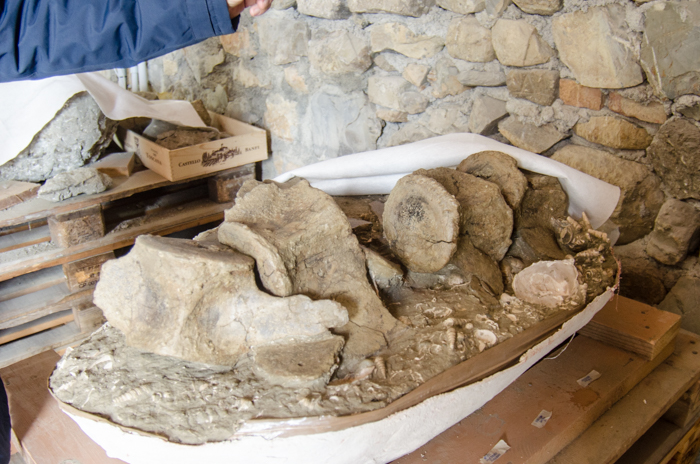
Thanks to Laura Gray at Il Palazzone for telling me about Brunella. You can follow the discoveries of the Brunella team on Twitter at #whaleinavineyard. For those who wish to learn more about Brunello, I highly recommend “Brunello di Montalcino” by Kerin O’Keefe.

Pingback: The History of Brunello di Montalcino - Walk and Wine with Italiaoutdoors | Italian Food, Wine, and Travel
Pingback: Walk and Wine in Tuscany - Il Palazzone | Italian Food, Wine, and Travel